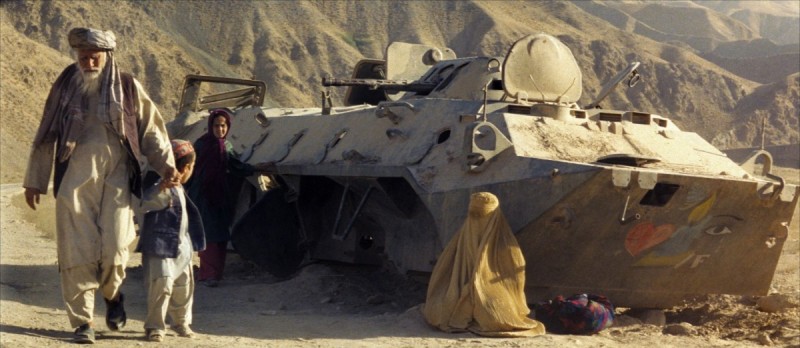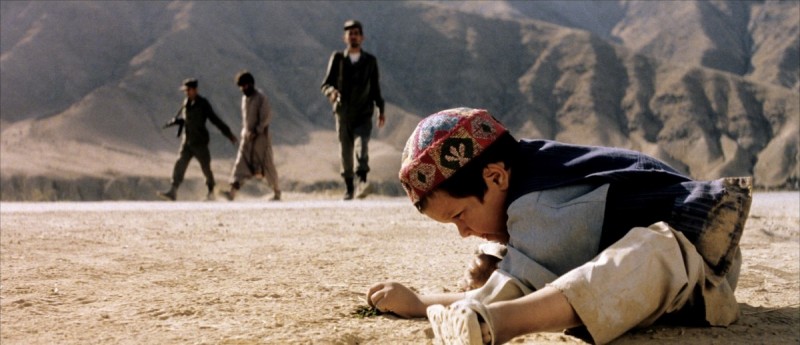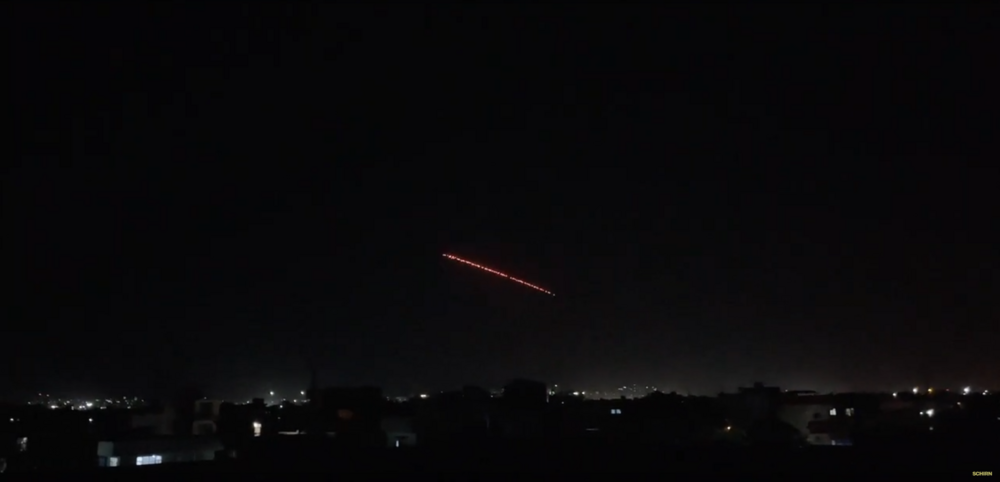With his video work “Takbīr”, artist Aziz Hazara spans the recent history of Afghanistan. Here, he focuses on the call “Allāhu Akbar” with its variety of different meanings.
Probably no other state’s national flag has undergone as many changes as that of Afghanistan. In their own unique way, the redesigns, changes, and modifications of the flag tell the story of the landlocked country, whose population has suffered and continues to suffer alternately at the hands of imperial, colonial, monarchist, and religious interests, as well as revolutions, wars, and conflicts. On August 17, 2021, at an initial conference after seizing power, the Taliban declared the previous black-red-green tricolor to be invalid since the Islamic Republic of Afghanistan no longer existed. The flag of the internationally unrecognized Islamic Emirate of Afghanistan, which was presented in its place, now features the Shahāda, the creed of Islam, on a white background, just as it did in the 1990s. The Takbīr, which describes the call “Allāhu Akbar” (God is great), has disappeared from the flag.
I grew up with it, my parents’ generation grew up with war, so we have always been in that situation
“Takbīr” is also the title of the new video work by Afghan artist Aziz Hazara. The almost ten-minute work opens with shots of the night sky over Kabul shortly after the Taliban had seized power: The city lights seem blurred while the camera tries to focus on shimmering cones of light in the dark night sky. The silhouette of the cameraman casts dark shadows on a street where traffic continues to flow imperatively before it seems to dissolve into the blue light. Eventually, we hear the call “Allāhu Akbar”, which sets off a chain reaction. The camera shifts into a steady circular motion, the lights of the city dissolve into a trail of light that reaches into infinity, and from all directions the Takbīr now resounds from the mouths of children and adults.
A sign of protest
The cry of “Allāhu Akbar”, which Hazara places at the center of his work, has a number of meanings: It is part of the daily prayer and is used as a war cry, but it can also be an expression of joy, sadness, or worry. During the Iranian revolution in 1979 as well as during protests after the Iranian presidential election in 2009, the call was heard again and again, while under the Soviet occupation of Afghanistan in the 1980s, it was also heard under the starry night sky as a sign of protest. The phrase is likewise used by Arabic-speaking Christians and Jews.

In Aziz Hazara’s works, consisting of photographs, video works, sound installations, and sculptures, his interest in memories, archives, surveillance, and the politics of representation shines through again and again. For him, it is deeply intertwined with geopolitics and the never-ending conflict Afghanistan finds itself in. Under the working title “Gift to American People,” he is currently shipping 20 tons of waste in a cargo container from the former U.S. military base in Bagram to the United States. The shipment, which takes over a year, is being meticulously tracked by the artist along its route via Karachi, the Indian Ocean, and finally the Atlantic Ocean.

Aziz Hazara, A gift to the American people, 2021–22, film still, Image via www.moussemagazine.it
sounds as a form of memory
In the five-channel installation “Bow Echo” (2019), for which Hazara was awarded the Victor Pinchuk Foundation’s “Future Artist Generation Prize” last year, five boys try to resist the treacherous Afghan winds while balancing on a large stone and blowing into small trumpets whose shrill sound threatens to be extinguished by the noise of the wind: “The protagonists create eerie sounds as a form of memory as well as a connection to a landscape where many traumatic events have taken place,” says the artist, summarizing his work.
Atiq Rahimi’s 2004 work “Khâkestar-o-khâk” (“Earth and Ashes”), the film adaptation of his 2000 novel of the same name, also deals with these kinds of intolerable events and the handling of such trauma. It will be screened as the second film in this “Double Feature” and tells the story of the elderly Dastaguir (Abdul Ghani) and his grandson Yassin (Jawan Mard Homayoun) during the Soviet occupation. Through the barren Afghan desert, the pair make the arduous journey to a mine where Dastaguir’s son works. During an attack, the entire village from which the family comes was razed to the ground. The sole survivors in the family are the grandfather and grandson, and the son working in the distant mine, to whom Dastaguir must now deliver the catastrophic news.

Atiq Rahimi, Khâkestar-o-khâk (earth and ashes), 2004, film still, image via rarefilmfinder.com
In his harrowing, poetic narrative, Atiq Rahimi stages a moving meditation on a never-ending cycle of violence and retribution that burns deeply into society. The enemy itself remains not only nameless in the film, but in some ways interchangeable. “Khâkestar-o-khâk” focuses entirely on the population living on the ground and increasingly places ways of dealing with grief at the center of its dramaturgy. Atiq Rahimi, who fled Afghanistan under the Soviet occupation, and Aziz Hazara, who grew up under Taliban rule in the 1990s and later experienced the U.S.-led intervention with all its consequences, are separated by a good 30 years. A generation in which the reality of life in Afghanistan has hardly changed and is marked by oppression, war, and violence: “It’s an everyday phenomenon for us. I grew up with it, my parents’ generation grew up with war, these guys are growing up with war, so we have always been in that situation”, says Aziz Hazara.

Atiq Rahimi, Khâkestar-o-khâk (Erde und Asche), 2004, film still, image via rarefilmfinder.com










